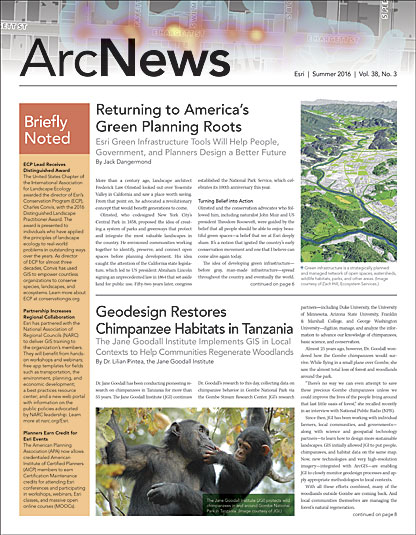Esri is constantly improving ArcGIS Online. The latest release includes updates to item detail pages, the map viewer, the scene viewer, and account administration.
Improved Item Detail Pages
With an enhanced layout, better workflows, and more streamlined performance, users can explore items more in depth. An interactive attribute table integrates related records and attachments so that users can more easily navigate data and view all aspects of a field together—including field values, summary statistics, and settings. Content creators and administrators can change an item’s settings, such as feature layer styles and pop-ups, in the item details page as well. And item owners now receive notifications when new comments are posted. They can also delete comments about items they own.
A Smarter Map Viewer
The map viewer contains new smart mapping styles to help users better understand their data as it relates to time. The Continuous Timeline (Color) and Continuous Timeline (Size) styles let users view data sequentially, from old to new or before and after a key date. A health care organization could, for example, use this to evaluate how the rate of measles immunizations changes in the weeks before and after instituting a pro-immunization campaign.
Scene Viewer Innovations
In global scenes, users can now employ tile layers that have a geographic coordinate system (GCS) World Geodetic System 1984 (WGS84) projection. The scene viewer also supports a new type of scene layer called integrated mesh that can represent concave or overhanging vertical features such as cliffs and building walls. Users can create these and share them in ArcGIS Online using Drone2Map for ArcGIS. It is now possible to configure ground properties and elevation layers using the new Ground setting, and users can enable realistic atmospheres in their scenes with the new High-Quality setting. It’s easier to change how sunlight and shadows affect scenes, and there is a new option in the environment settings that automatically replicates the sun’s position in a scene for a given day or even an entire year. Users can now create 3D web apps directly from the scene viewer as well.
Espousing More Open Standards
As part of Esri’s commitment to supporting standards, interoperability, and Open Geospatial Consortium, Inc. (OGC), services, the following improvements have been made:
- Pop-up windows can be enabled on OGC Web Map Service (WMS) layers.
- Custom request parameters can be used with OGC WMS layers.
- OGC Web Feature Service (WFS) layers can be added to maps as items.
- Third-party OGC Web Map Tile Services (WMTS) can be included as items too.
Better Administration of ArcGIS Online
Administrators can now manage service credit budgets as part of the invitation process for automatic and preestablished accounts, as well as set a default service credit allocation for new users. They can also enable enterprise logins to give users access to Esri web resources such as support, training, forums, and downloads. Organizations can configure custom groups with layers they want to use to perform analysis in the map viewer. And, with the new Esri shopping cart in ArcGIS Marketplace, administrators can designate which apps users can buy.
More Versatile ArcGIS Apps
Collector for ArcGIS now includes support for high-accuracy GPS data collection using external Global Navigation Satellite System (GNSS) receivers. And Survey123 for ArcGIS, Workforce for ArcGIS, and Drone2Map for ArcGIS have all graduated from beta.
Improved ArcGIS Content
The Living Atlas of the World now has detailed boundary layers for several dozen countries—all of which are available for display and analysis in the map viewer and other ArcGIS apps. The beta versions of Esri vector maps have also been improved with data for several areas and layers. And Esri has updated numerous basemaps, including Light Gray Canvas and Dark Gray Canvas, the World Street Map, and the World Topographic Map. World Imagery now includes the National Agriculture Imagery Program’s (NAIP) one-meter imagery from 2015 for 22 additional US states. A new imagery map is also available in the GCS WGS84 projection, which supports 3D display in apps such as ArcGIS Earth. Esri’s demographic maps for the United States have been updated with the latest 2016 estimates and 2021 forecast data, and demographic maps for several countries have been upgraded with more recent data as well.
For a comprehensive look at the latest release of ArcGIS Online, visit the ArcGIS Online blog.

